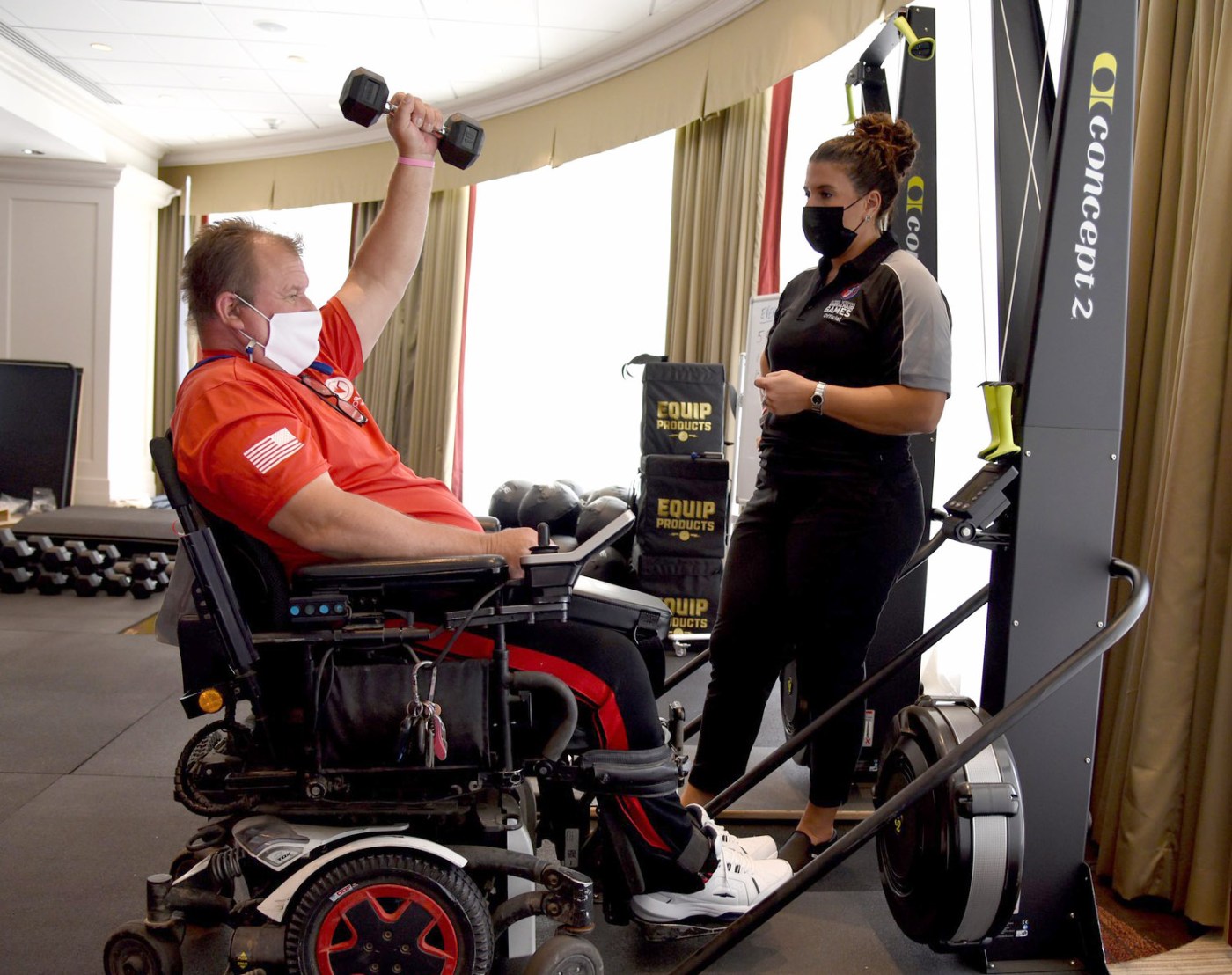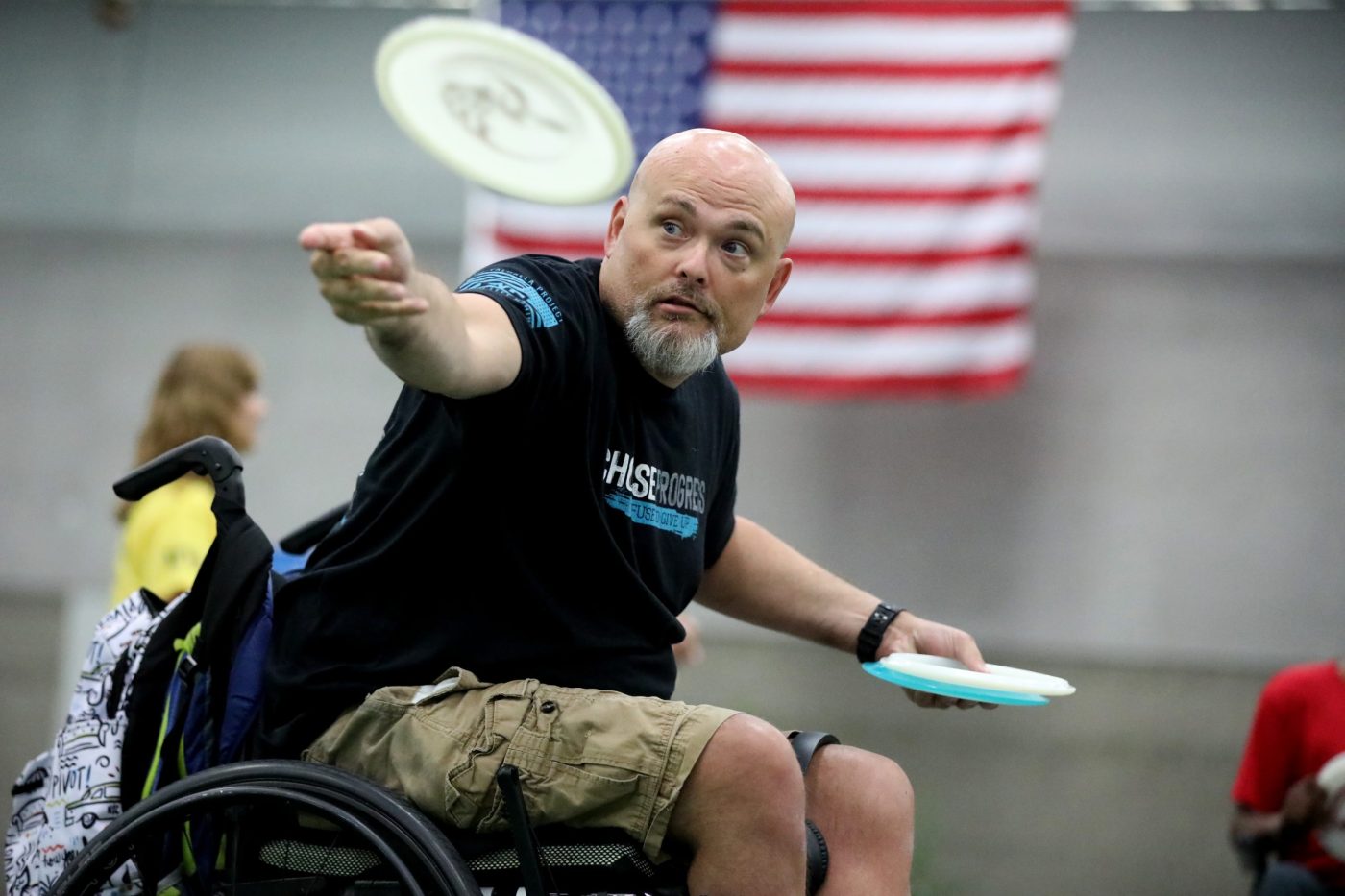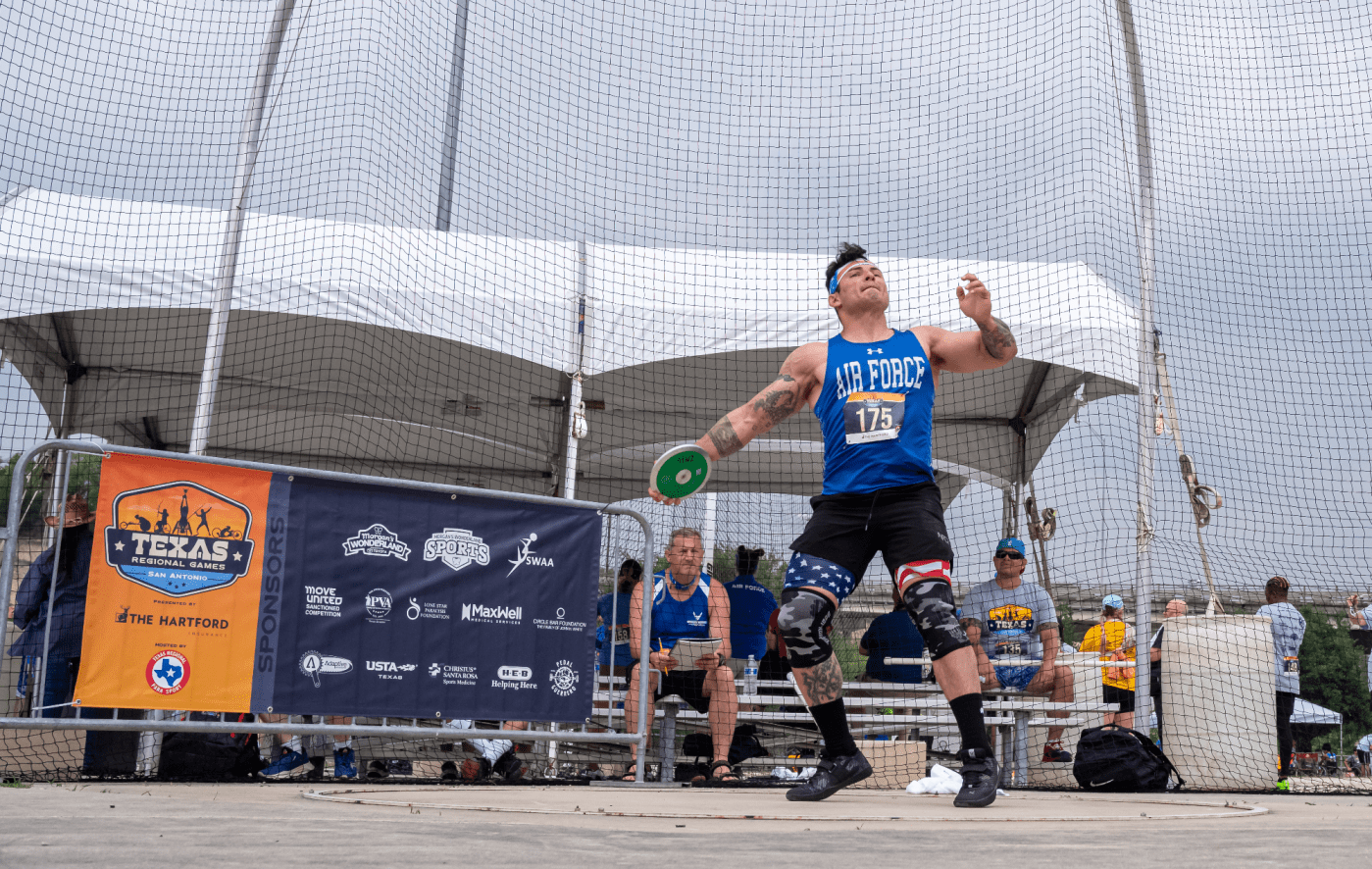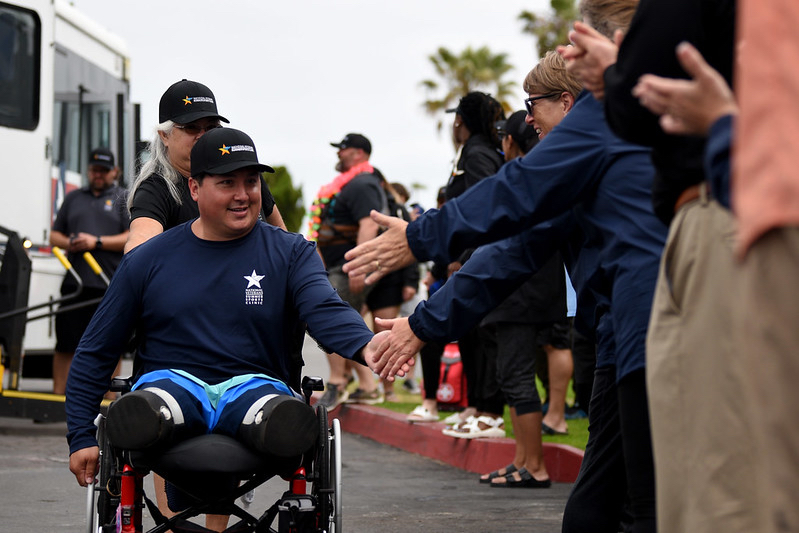Life as a competitive powerlifter can take its toll. Just 38, Christina Lafex can’t run or jump. Her knees carry serious cartilage damage and her back hurts from years of strength competition events that call for lifting unfathomable amounts of weight.
Case in point: At the World’s Strongest Woman competition in Ukraine in 2011, where she placed fifth overall, Lafex squatted the back end of a car that weighed more than 500 pounds. Elsewhere, she completed a deadlift of 455 pounds and an axle clean and press of 225.
If she had to do it all over again, Lafex says unequivocally that she would. Last week, the Certified Therapeutic Recreation Specialist put her experience in strength and fitness toward leading the first-ever live-virtual adaptive fitness competition at the 40th National Veterans Wheelchair Games, which ended on Saturday. She introduced a similar program at the Orlando VA Healthcare System in Florida about a decade ago.
Veterans aimed for medals in adaptive fitness competition
Lafex, who is not a Veteran, is eager to help improve the lives of those who have served by upgrading their level of functioning and health and well-being.
“It’s really nice to pass the torch to the Veterans and let them do what they can do with their body,” she says. “I like seeing how they can function and challenge themselves. It’s special when you see someone perform any type of athletic or strength feat. When they do something that they weren’t sure they could do, and they’re successful at it, it’s great to see the look they have on their face. They sit up a little higher. Just the way they present themselves afterward is nice to see. Seeing that day in and day out is the most rewarding thing for me.”
Organizers added adaptive fitness to this year’s wheelchair games as a way of branching out into non-traditional games and competition. Almost all of the Veterans who competed in adaptive fitness – up to 40 – did so in the second wave of events from Thursday to Saturday. Participants tested their mobility, strength, and cardiovascular capacity in a myriad of exercises in their quest for gold, silver and bronze medals. They included:
- Lap to overhead: While maintaining midline stabilization and a flat back, the Veteran braces his or her core and presses the object overhead, then finishes the movement by completing a full arm extension.
- Ski Erg: In a simulation of cross-country skiing, the Veteran brings his or her hands on the Ski Erg handles to eye level while keeping their arms at 90 degrees, then crunches down using the core as much as possible.
- Box jump: An axle of a wheel must pass the front of a taped line, before the Veteran pulls back, performs a 180-degree spin, and pushes forward so the front axle passes the other taped line. The Veteran must return to the starting position to equal one repetition.
‘Wonderful on so many levels’
Gary Stott, a 66-year-old Air Force Veteran, broke his neck about a decade ago in a non-military accident. He’s a quadriplegic with paralysis and spasticity in everything below his shoulders. However, he has worked hard since the accident to establish movement in his body below the shoulders and uses forearm crutches to walk therapeutically.
At the National Veterans Wheelchair Games, Stott challenged himself on the Ski Erg and showed enough power in his arms to pull both of the cables down. This is not new to him. He participates in an adaptive sports program at the University of Wisconsin, Madison.
“The adaptive fitness is wonderful on so many levels,” says Stott, who also competed in power lifting and cycling at the games. “When you’re working out, you have a number of goals. This gives you one more thing to work on. Then, of course, there’s the camaraderie with the other Veterans. You can help people in similar situations. I try to give pointers to other Veterans.”
Instructors coached Veterans on the exercises
In Lafex’s opinion, the adaptive sports competition she designed presented both a physical and mental challenge to the Veterans. “Your heart rate is going to rise. That’s for sure,” she says. “Different workouts elicit different responses, too. One could be more strength-based. One could be more cardiovascular-based. One could be kind of a sprint style. One could be long and steady. They’re all very different.”
The Veterans at the wheelchair games, she explained, didn’t need to be experienced at doing adaptive fitness exercises.
“We taught them their individual skills, modifications, how to do the workout as successfully as possible,” she says. “The other day, we were just trouble shooting with some of the Veterans to see based on their level of functioning what they’re able to grasp onto and what weight they can tolerate, while still challenging themselves and maintaining a safe environment. We didn’t want them to accidentally hurt their shoulders or hinder their performance in other events throughout the week.”
Topics in this story
More Stories
Veterans and volunteers interested in registering online for the 43rd National Veterans Wheelchair Games (NVWG) can do so now through April 5, 2024.
Last year, Move United hosted 26 adaptive sports competitions in 22 states for 1,537 individual athletes. This year, that number is increasing to 35 events in 24 states for even more Veteran athletes.
Registration for the National Veterans Summer Sports Clinic (NVSSC) opens on Dec. 1, 2023, and runs through March 1, 2024. The 2024 NVSSC will take place August 25-30 in San Diego, California, offering an extended opportunity for Veterans to partake in adaptive sports.







